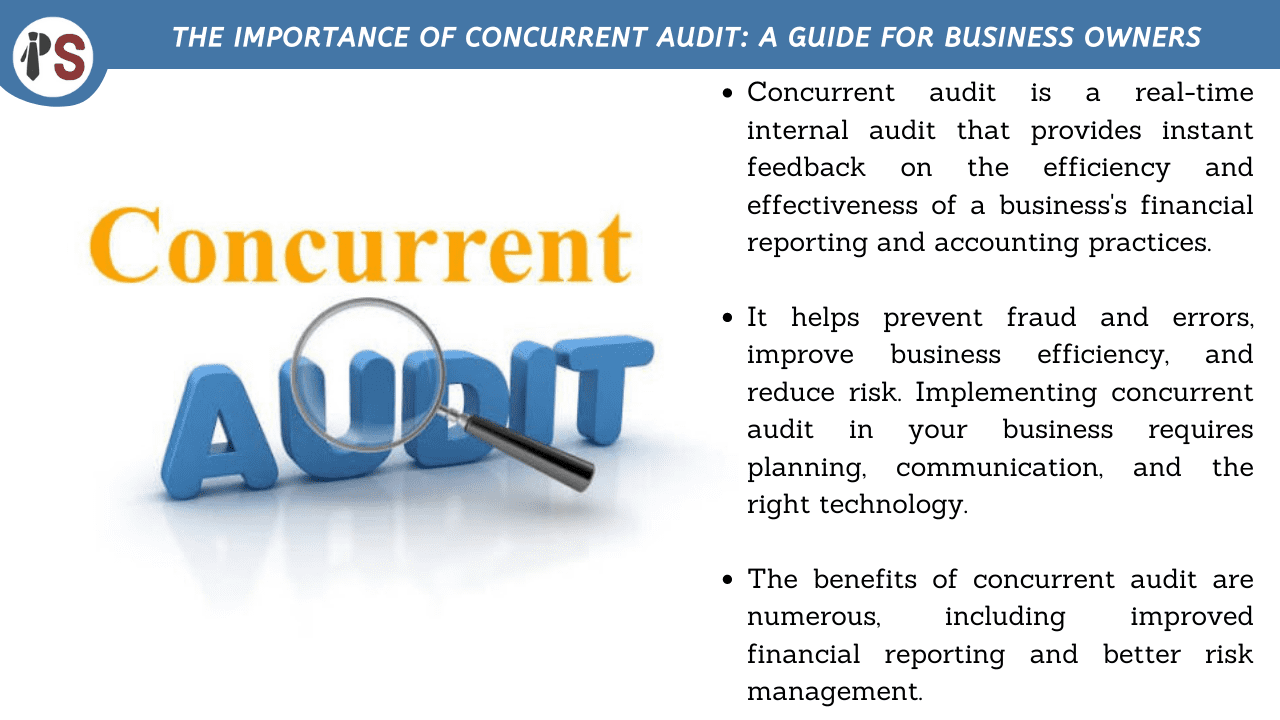
Concurrent audit is a real-time audit that is performed during the course of a business's operations. This type of audit is conducted on an ongoing basis to ensure that financial transactions are being recorded accurately and efficiently. Concurrent audits are generally conducted by an internal auditor or an independent auditor who is hired to oversee the organization's accounting and financial systems.
Concurrent audits are important for businesses of all sizes because they provide an independent review of the organization's financial operations. This type of audit helps to identify errors, irregularities, and potential fraud before they can cause significant harm to the organization. Additionally, concurrent audits can help to identify areas where improvements can be made in the organization's financial systems and processes.
Implementing a concurrent audit requires careful planning and coordination between the audit team and the organization's management. The following are some key steps that should be taken to successfully implement a concurrent audit:
Identify the scope of the audit: The first step in implementing a concurrent audit is to identify the scope of the audit. This includes determining which financial processes and transactions will be audited, as well as the time frame for the audit.
Establish audit procedures: Once the scope of the audit has been identified, the next step is to establish audit procedures. This includes developing audit checklists, creating audit trails, and identifying key performance indicators (KPIs) that will be used to measure the effectiveness of the audit.
Assign audit responsibilities: After audit procedures have been established, the audit team should be assigned specific responsibilities. This includes identifying who will be responsible for conducting the audit, as well as who will be responsible for reviewing and analyzing the results of the audit.
Implement the audit: Once the audit team has been established and audit procedures have been put in place, the audit can be implemented. This involves collecting and analyzing data related to the organization's financial operations in real-time.
Review and analyze the results: After the audit has been completed, the results should be reviewed and analyzed. This includes identifying areas where improvements can be made in the organization's financial systems and processes, as well as identifying any errors, irregularities, or potential fraud.
In conclusion, concurrent audits are an important tool for businesses to ensure that their financial operations are accurate and efficient. By implementing a concurrent audit, organizations can identify areas for improvement and take proactive steps to prevent potential errors and fraud. With careful planning and coordination, organizations can successfully implement a concurrent audit and reap the benefits of a more efficient and effective financial system.
At Professional Saathi, we offer a range of business consultancy services that help businesses improve their performance, achieve growth, and overcome challenges.
Copyright 2025 © Created By KTPG PROFESSIONAL SAATHI CORPORATE CONSULTANT PRIVATE LIMITED, All Rights Reserved.
Leave Your Comment